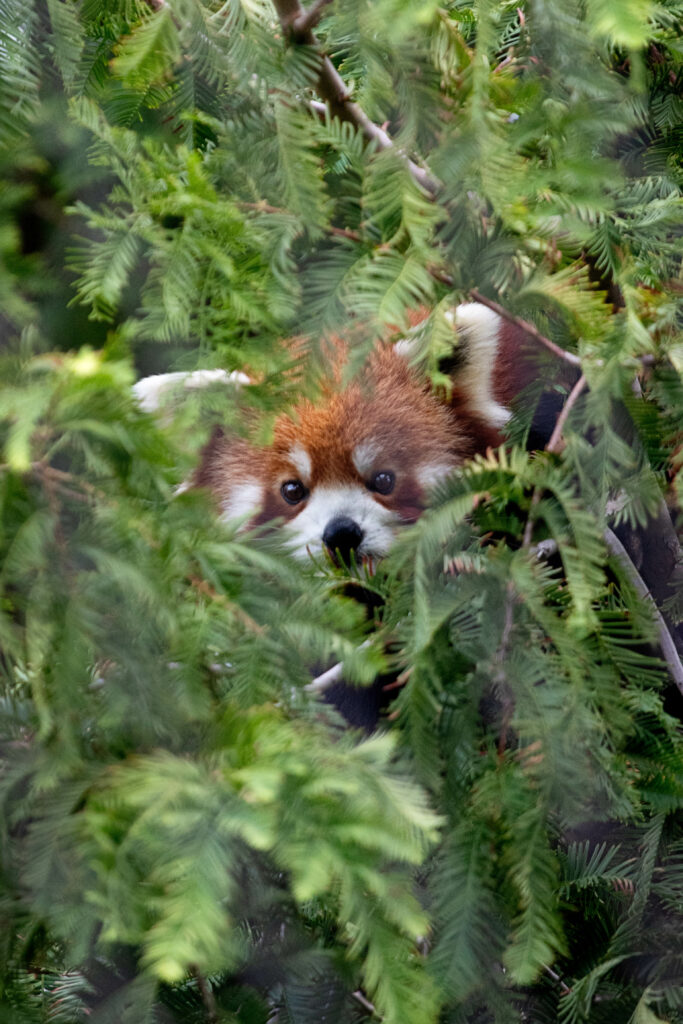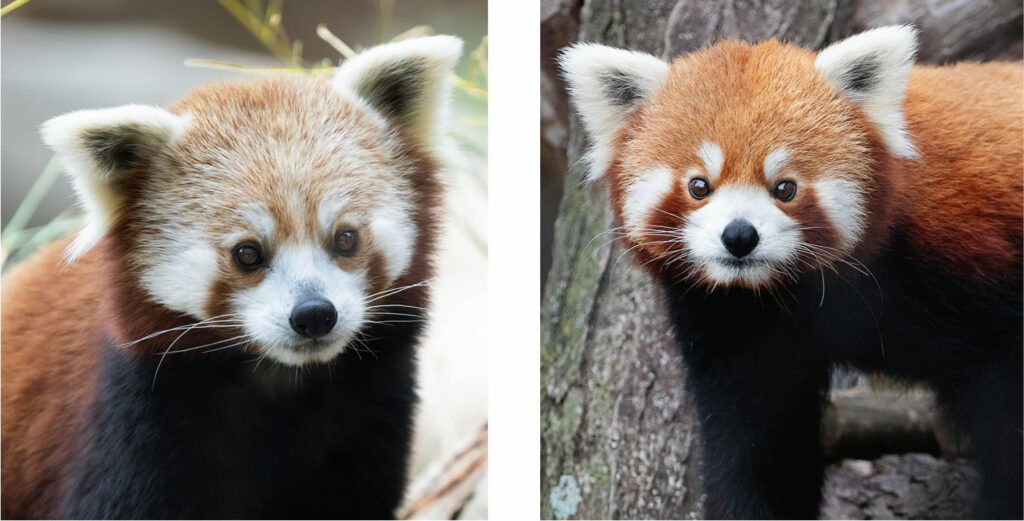Inside the Slawson Family Asian Big Cat Trek, there’s a round habitat with a tall dawn redwood tree. At a first glance, the habitat might look empty. But if you look high up in the tree branches, you might see a little red face staring back at you.
“If I was going to put a PSA out there for red pandas, I would say, look up,” Zookeeper Jody Sentel said. “Anytime you’re around that habitat, and you don’t see the red pandas, and you don’t see a sign that they’re not there- look up.”
Sedgwick County Zoo is home to two red pandas- Ravi and Sunsari. And although they live alongside Asian big cats at SCZ, red pandas are not felines.
“People commonly think that they resemble raccoons or foxes,” Sentel said. “They are actually in a family all of their own. So, they don’t have any close relatives.”
They aren’t bears either, despite having “panda” in their name. “Red” obviously comes from their fur coloration. “Panda” most likely is derived from “ponya,” a Nepali word that is usually translated to mean “bamboo eater.” An apt name considering in the wild around 95% of their diet consists of bamboo.
Red pandas were actually given their scientific name in 1825. The panda bear wouldn’t be scientifically named until 1869. So, the “lesser panda” predates the “giant panda” by more than four decades.

SCZ has had red pandas since 2009 when the Tiger Trek, now known as the Slawson Family Asian Big Cat Trek, opened.
Sunsari, who turned seven in June 2023, came to SCZ in 2017 from the Smithsonian Conservation Biology Institute. She has a lighter face and is more timid.
“She still enjoys interacting with our keepers, but she’s very aware of everything that’s going on at all times,” Sentel said. “In the beginning, anytime a keeper would go out into the exhibit, she’d just shoot up to the top of a tree. And now she’s usually down at the door waiting for us, wanting her breakfast. So, she’s come a long way.”
Four-year-old Ravi came to SCZ in 2020 from the Oklahoma Zoological Park. Ravi is a deeper red color and is a crowd favorite.
“He is the photogenic guy that everybody knows,” Sentel said. “He’s very curious, very energetic. He’s all over the place all the time. If keepers are out there, he’s ‘helping’ with whatever they’re doing.”
In the wild, red pandas can be found in the eastern Himalayas and southwestern China. They live in temperate forests of coniferous trees at elevations between 6,600 and 14,100 ft.
“Red pandas actually migrate vertically as the temperature rises and falls,” Sentel said. “In the colder months, they’ll move lower down the mountains, and in the warmer months, they’ll move higher to stay cool.”

Red pandas are also a flagship species. A flagship species is a species chosen to help raise awareness and support for conservation efforts. They’re like a mascot.
“They are so charismatic,” Sentel said. “Sometimes they’ll put that cute little face on a really important message so the project will gain traction. And the things that we do to benefit the red pandas will also benefit many other species and the forests in the region.”
In the wild, red pandas are endangered. Habitat fragmentation and destruction of forests severely affect their population. Poaching also plays a role. Red pandas are hunted for their fur, but are also sometimes killed by traps set for other wildlife.
Organizations like The Red Panda Network are working to help maintain the red panda population. Through research and monitoring, habitat restoration, education and outreach, they’re helping ensure red pandas will be around for future generations.
By becoming a Zoo Pal through the Sedgwick County Zoo, you can help to directly fund the care of our red pandas, Ravi and Sunsari.
The next time you visit the Asian Big Cat Trek and find yourself peering into the red panda enclosure, remember to keep your eyes open for red fur and bushy tails. And when in doubt – look up!
Want to learn more? Listen to our podcast episode about Red Pandas